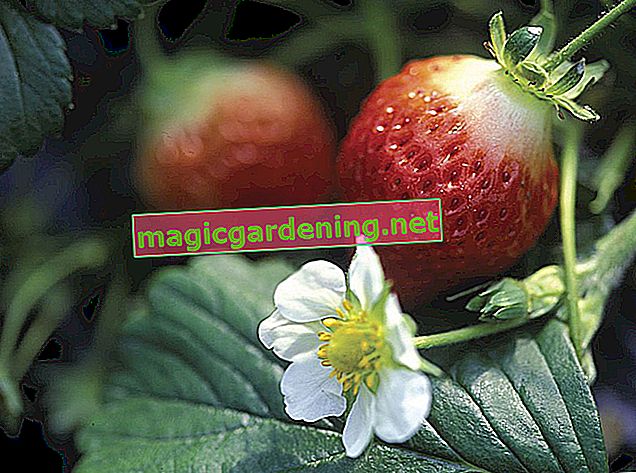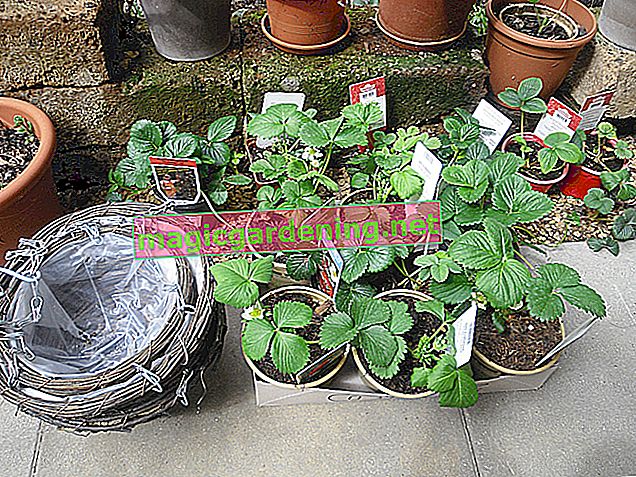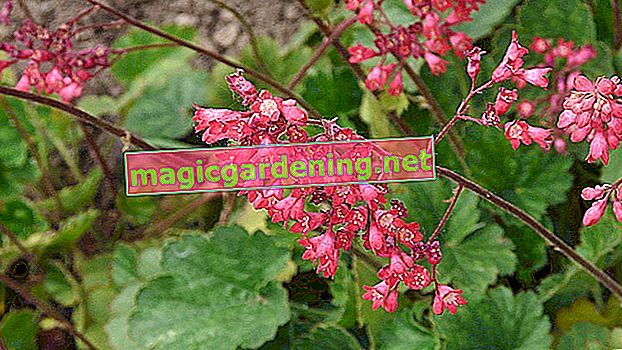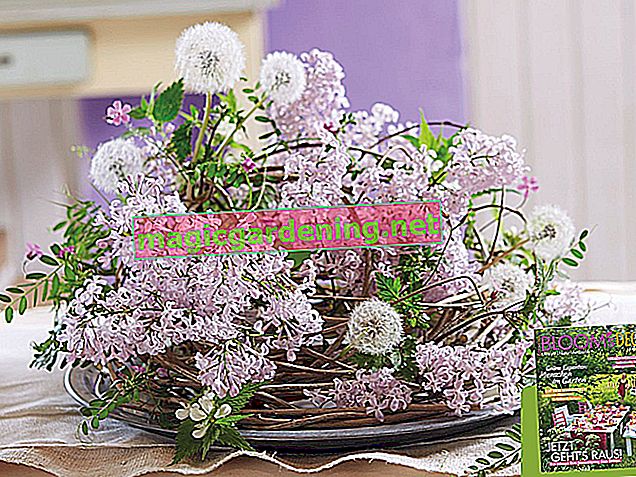
the essentials in brief
- Coffee grounds are suitable for all plants that can tolerate a pH between 6.0 and 7.0. These include vegetables, ornamental shrubs and flowering plants. Bog bed plants, weakly consuming flowering plants or herbs from poor locations do not tolerate coffee grounds.
- The powder is dried before use. The best results are achieved when the powder is worked into the soil.
- Coffee grounds have a slightly acidic to neutral pH and mainly contain nitrogen and other nutrients such as potassium and phosphorus. The activity of microorganisms is necessary for plants to be able to use the nutrients.
- It can be used for citrus plants or the lawn, mulching and mushroom growing.
Which plants like coffee grounds as fertilizer?

Coffee grounds are a good fertilizer for plants that grow in a moderately acidic to almost neutral environment. You can use the free fertilizer in the vegetable patch or work it into the substrate under hedges and bushes. Some house plants can be supplied with an aqueous extract from the coffee grounds. Seedlings do not tolerate coffee fertilization well, because they tend to shoot quickly due to the excessive nitrogen supply.
also read
- Coffee grounds - an inexpensive fertilizer for your geraniums
- Coffee grounds as potting soil
- Coffee grounds have positive effects on the compost
| preferred pH | Examples: good NPK fertilizers | Coffee grounds suitable? | |
|---|---|---|---|
| Orchids | 5.5 to 6.0 | 10-8-10 | yes, if plants grow in substrate |
| Roses | 5.5 to 7.0 | 7-5-8 | Yes |
| Hydrangeas | 4.0 to 5.5 (up to 6.0) | 7-3-6 | conditionally, as a supplement |
| tomatoes | 6.5 to 7.0 | 7-3-10 | yes, as a supplement |
| paprika | 6.2 to 7.0 | 6-6-8 | yes, as a supplement |
| Geraniums | 5.5 to 6.0 | 3-7-10 | conditional, very economical use |
| Cucumbers | 5.6 to 6.5 | 4-5-8 | Yes |
| blueberries | 4.0 to 5.0 | 3-3-5 | conditional, economical use |
| lemon Tree | 5.5 to 6.5 | 14-7-14 | yes, as a long-term fertilizer |
Since the nutrient requirements of a plant change over the course of the growing season, fertilizers with different NPK ratios are necessary depending on the season. Nitrogen-based fertilizers such as coffee grounds are particularly useful for many plants in spring, as they promote the growth of leaves and shoots.
Can coffee grounds be used without restrictions?

The myth that coffee grounds should only be used for planting acidic soils is widespread. In fact, the pH of the coffee residues is not particularly acidic and can lead to deficiency symptoms in real bog plants such as rhododendrons. The plant likes values around 4.5 and tends to have dark green discolored leaf veins if the pH is too high. Plants that depend on calcareous soil can tolerate small amounts of coffee grounds. This includes zucchini, which is comfortable at a neutral pH of 7.0.
Coffee grounds usually have a very weakly acidic pH value and are not suitable for bog plants.
Coffee grounds for flowers
Whether flowers should be supplied with the natural fertilizer depends on the respective species. As with the vegetable plants, there are consuming flowers and those that thrive better in poor locations. In general, flowering plants should be fertilized sparingly with coffee grounds, as the NPK ratio is not optimal. These plants do better when they get less nitrogen and more phosphorus. These plants include bluebells, boxwood, carnations, and bulbous plants such as daffodils and tulips.
Summer flowers benefit from coffee grounds:
- have a high nutritional requirement, so coffee grounds are not enough as fertilizer
- better mix and administer three parts of coffee grounds and one part of flower fertilizer (€ 13.27 on Amazon *)
- Soil organisms convert coffee grounds more quickly and produce humus
- improved soil properties support the growth of summer flowers
Herbs
Most herbs are undemanding and thrive without additional fertilization. However, herbs in partially shaded locations have different needs than sun-loving plants. Mediterranean herbs are dependent on barren soils and can become ill or die if they are over-supplied with nutrients. Other culinary herbs are nutrient-consuming and place more value on additional fertilization.
Garden herbs and potted herbs are so different:
- Herbs from poor soils: lavender, rosemary or savory do not tolerate coffee grounds
- Lime-loving herbs: Coffee fertilizer is unsuitable for oregano, sage or borage
- Nutrient-consuming herbs: lemon verbena or chives can be fertilized with coffee
Use coffee grounds
The basic requirement for fertilizing with coffee grounds is preparatory storage. If you use it damp, mold quickly forms. The powder doesn't go bad when it gets moldy. However, it must then be sterilized before use so that the mold does not spread in the earth.
dry
Fill the leftovers from the coffee filter into a wide container in which you can spread the material loosely. The lower part of a mini greenhouse is ideal for drying. Place the jar on a sunny window sill and mix the powder daily. You can use a fork to crush any lumps.
Another possibility is drying at 50 to 100 degrees Celsius in the oven. The substrate is dry after about 30 minutes. You can also spread coffee grounds out on a plate and place it in the microwave for five minutes on medium power.

Apply
When planting young plants in the garden, you can put a few teaspoons of coffee grounds in the planting hole. Supply your potted plants with a mixture of potting soil and coffee grounds in small quantities when repotting. For plants in a coarse substrate, watering with an aqueous extract of coffee grounds is recommended.
To do this, put the fine-crumbly powder in water and let the mixture steep for a few days. Make sure that not too much coffee powder accumulates on the substrate surface. If that's the case, consider working it into the ground with a small rake.
- Long-term fertilizer : sprinkle coffee grounds on the bed once or twice a year
- Immediate fertilizer : if necessary, brew the coffee grounds again and pour it when it has cooled
- Composting : Coffee grounds should not make up more than 20 percent of the compost volume
How often and how much coffee grounds?
As for the dosage, experiment yourself. Depending on the type of coffee, the ingredients can vary and the fertilizing effect differs with regard to your plants and the environmental conditions. Start with small amounts and watch how your plants react to them. You can then slowly increase the dose until it is optimal.
Guide values for orientation:
- Coffee grounds can be used outdoors four times a year
- Work the content of a coffee filter (about 30 grams) into the substrate per fertilization
- Fertilize indoor plants with coffee powder in winter and spring
- two teaspoons (about four to eight grams) of powder are sufficient per plant
Ingredients and effects in the garden
The fact that coffee grounds are valuable for rhododendrons, peonies and ferns is primarily due to the ingredients and less to the pH value. This is subject to fluctuations that are influenced by coffee powder, but not permanently sealed. So that the plants benefit from the valuable ingredients, you have to work the residues into the soil.
ingredients

Coffee grounds contain numerous nutrients, trace elements and tannic acids as well as traces of caffeine and bioactive substances such as antioxidants. This applies primarily to the residues in the coffee filter. More than ten percent of coffee grounds are made up of nitrogen-rich proteins. The average NPK ratio is 2-0.4-0.8. Most of the ingredients pass into the coffee when it is prepared in the espresso pot.
Effect of coffee grounds:
- Nitrogen : stimulates leaf growth
- Phosphorus : promotes flowering and fruit ripening
- Potassium : supports cell structure and gives the plant stability
Coffee grounds are an organic fertilizer whose NPK ratio is beneficial for numerous plants. Due to the nitrogen-based nutrient composition, the residue left in the coffee filter is ideally suited as an additional fertilizer. It is a good complement to compost, which often has low-nitrogen concentrations, and is a perfect alternative to conventional fertilizers.
Changes in pH
Coffee grounds usually have a pH value between 6.4 and 6.8 and are therefore in the weakly acidic to almost neutral range. This makes it unproblematic as a fertilizer for most plants. Washington State University researchers have found that pH varies widely depending on the strain. According to their results, there are varieties with values between 4.6 and 5.26 and those whose values of 7.7 or 8.4 tend to be in the alkaline environment.
The scientists could not confirm that the soil becomes acidic after prolonged use of coffee grounds. In the experiments it was found that the pH value of the substrate treated with coffee grounds rose in the first two to three weeks and then gradually decreased. This indicates that the value fluctuates in the course of microbial activity and does not remain the same over the long term.
Tips
Pay attention to the acidity of the coffee. From this it can already be deduced in which environment the residues in the filter are located. Mix together coffee grounds and egg shells, which you grind finely beforehand. The peels are calcareous.
This is how plants benefit from nutrients
According to the assessment of garden experts, coffee grounds as the top substrate layer in potted plants have no or a very delayed effect. This is because the powdered substance does not provide any plant-available nutrients. These are bound in the fine particles and must first be released by microorganisms in the soil.
It is therefore important that you work coffee grounds into the soil. You will achieve the best fertilizing results when used in the garden. Here coffee grounds are used to build up the soil, because the decomposition process creates humus-forming substances.
- Bacteria and fungi break down chemical components in coffee grounds
- Earthworms pull coffee particles into the ground, which improves structure
- when the coffee powder breaks down, humic substances are produced
background
Why fresh coffee grounds don't fertilize
The C / N ratio stands for the weight proportions of carbon (C) and nitrogen (N) that occur in soils. It is given as a number and serves as an important indicator of the availability of nitrogen to plants.The smaller the number, the closer the carbon-nitrogen ratio and the more nitrogen is available to the plants. Fresh coffee grounds have a suboptimal ratio, because the values are very high and fluctuate between 25 and 26. Therefore, fresh coffee grounds that are scattered on the ground do not bring any noticeable success.
The plants cannot absorb the available nitrogen in the soil. Over the course of a year, the coffee powder is broken down by microorganisms and the C / N ratio changes. It drops to 21, 13 and further to eleven or even nine, so the plants only benefit from directly applied coffee grounds after a year. In this respect, it behaves like freshly cut material.
Application examples

If you use coffee grounds correctly, you can use them in a variety of ways in the garden. Over-fertilization is almost impossible. Rather, the plants suffer from suboptimal soil structures or an unfavorable water-air balance if you use too much coffee powder.
Coffee grounds work so differently:
- Sugar beet seeds germinate better
- better growth in cabbage and soy plants
- Seed growth of alfalfa, white and red clover is inhibited
- Geraniums, fern asparagus and three-masted flowers show stunted growth
race
Many grasses prefer a slightly acidic environment with a pH of 5.5. Fertilizing with coffee grounds can improve the growth of your lawn. Sprinkle the dried powder evenly on the surface and work it into the sward. Subsequent irrigation ensures that the particles are washed into soil pores.
In this way, microorganisms can do their work and decompose the material. Alternatively, watering with a diluted coffee solution is recommended. Freshly brewed coffee is mixed with water in a ratio of 1: 5 and then distributed with a watering can.
Tips
Check beforehand which species are in your lawn. Not all grasses tolerate coffee grounds. The Italian ryegrass often grows in park lawns and shows growth disorders when regularly fertilized with coffee grounds.
Citrus plants
The Mediterranean plants receive a basic fertilization with long-term effect at the end of April in order to benefit during the entire growing season. Citrus plants mainly need nitrogen. Phosphate is important for flower and fruit development. However, all citrus species are sensitive to fertilizers that contain phosphorus.
It is ideal if the concentrations of nitrogen and potassium are about the same and the phosphate content is lower. Coffee grounds are not suitable as the sole fertilizer, but should be given as a long-term fertilizer. It promotes lush growth and ensures lush green leaves.
Coordinated fertilization:
- only fertilize during the growth phase between April and September
- Small trees in bright and warm locations have a higher nutritional requirement
- Only fertilize potted plants moderately in shady and cool locations
compost

Over the course of several months, special bacteria and fungi that live in the compost decompose all chemical components of the coffee grounds. Earthworms use the fine particles as a source of food. Make sure that the starting material is as versatile as possible in order to promote a large number of microorganisms.
Ideally, a compost should not contain more than ten to 20 percent coffee grounds. Concentrations greater than 30 percent can negatively impact macro habitat. However, you don't have to worry that an acidic compost will develop. The pH value fluctuates constantly due to the activity of the microorganisms.
Mulching
Coffee grounds consist of fine particles and, when dry, have a crumbly structure. When it soaks up with moisture, it tends to compress easily. In this form, coffee grounds form a barrier against moisture and isolate the floor from air circulation. If you use coffee grounds for mulching, you should only apply the powder in thin layers and no more than an inch thick. Cover this layer with coarse organic materials such as wood chips.
Fresh coffee grounds are unsuitable:
- Soil can't breathe
- aerobic microorganisms do not get oxygen
- Mold formation is encouraged
Mushroom growing
Edible mushrooms can be grown in a flower pot filled with coffee grounds. The substrate should not be older than two to three days, as mold spores will settle on the surface if stored for a long time. Small amounts of coffee grounds are sufficient for the added mushroom mycelium to spread completely in the fresh substrate. This growth phase lasts about 14 to 28 days.
Youtubefrequently asked Questions
What does the coffee grounds contain?
Coffee grounds contain numerous substances that do not get into the coffee when it is brewed. The remains contain various antioxidants such as caffeine, chlorogenic acids and the nitrogen-containing and yellowish-brown melanoidins.
The powder is rich in tannic acids and nitrogen-rich proteins. Insoluble polysaccharides, which form the cell walls of the coffee bean, are also retained.
In addition to the nutrients nitrogen, phosphorus and potassium, which are important for plants, the coffee grounds contain essential oils, which are responsible for the typical aroma. These have antioxidant and antimicrobial properties and act as a deterrent against plant pests.
Can coffee grounds lower the pH of the soil?
Linda Chalker-Scott from Washington State University has researched that adding coffee grounds to potting soil does not lead to a drop in the acidic pH value. Rather, the value increases in the following time. Researchers suspect that this increase is caused by microbial activity. Only after the organisms have decomposed the material does the pH decrease.
Can I fully compost coffee grounds?
There is still no scientifically proven information about how much coffee grounds a compost heap can handle. The more varied the source material, the better your compost will work. Basically, ten to 20 percent coffee powder is not harmful to your compost. The coffee residues contain carbohydrates that are broken down and broken down by the microorganisms.
How can I still use coffee grounds?
Encafé is a flower pot made from coffee grounds and natural wax. It serves as a plant pot that is placed in the ground with the plants. Here it decomposes and acts as a natural fertilizer. The aromatic substances protect the plant roots from attack by pests such as roundworms.








